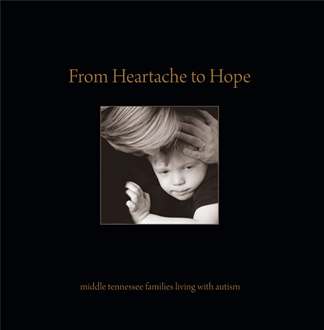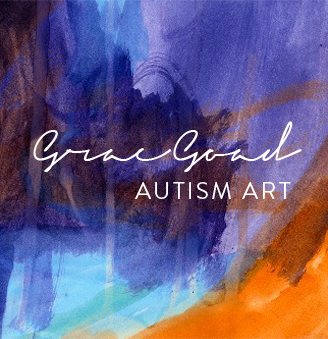Through the building's glass walls, the greenscape of Atlanta back dropped our meeting. Around the table sat architects, interior designers, builders, and developers. There, in their midst, I had one of those moments: part "AHA!" Part warm fuzzy. One that would make me tear up, and eventually, (much later,) elicit sobs. It was a full circle moment. One of family, love, and art.
At the meeting, by my side, sat Tammy Parmentier of Gallery One–my partner in the nonprofit social enterprise we are forming for artists with and without disAbilities to, in community, create, exhibit, and sell their work. We were in Atlanta to represent artists with disAbilities for potential installations within this national company's future developments. (This spring, we installed a 51-piece collection of 13 artists with disAbilities in Nashville's new Village Green Hills luxury apartments. Late summer, The ArtAble Collection I will be open to the public one evening via a reception complete with the Mayor attending and speaking–because this is groundbreaking for Nashville. )
As I listened to the minutiae of details involved in designing, building, and decorating a high-end multi-residential building, I thought of family. I thought of mother. In 2008, my mother died at age 87. She was the first woman residential home builder in South Carolina, boasting a distinguished career spanning four decades. She often told me she could have been an interior designer or an architect. Instead, a mother-less daughter of The Great Depression and the next to youngest of eight children, she saved for a two-year college by working in a textile mill post high school graduation. After her lengthy stint at a laborious, daily task requiring standing day-long and pulling threads from wool fabric, she boarded a bus and left for Tennessee. There she earned an associate's degree in accounting before returning to South Carolina to marry her high school sweetheart and launch a series of jobs. Preparing deeds for a lawyer and figuring lumber for a building supply firm would prepare her for her eventual career. In the 60s, the decade I, her last child, was born, found her working as a builder's bookkeeper and eventually building her first red brick ranch. By the 70s, she moved on to another larger builder where she developed well known neighborhoods in our hometown of Greenville. She'd eventually start an arm within that builder's firm, building larger custom homes until launching Dot Hammett Builder in 1978.
It was building with a woman's touch, she'd say. She knew how to sketch a plan for an architect; direct the grading of a lot; inspect the electrical wiring and tongue lash for a job ill-done and demand it done right; bake a cake for the crew at week's end; customize for a left-handed cook; and, for her signature touch, commission hand-painted tiles for a fireplace border.
At least a decade since she'd retired, six years since her death, there I sat with these people doing, on a commercial level, what she had spent her career creating residentially. Only, I was there about art. Visual art. A potential installation of art for purchase by the company. A purchase that will support a disenfranchised and no less talented sector of the artist community. A sector that lacks these opportunities for a myriad of reasons.
I was there because "Mama Dot" had a grandchild named Grace. And, Grace is my daughter, my only child, who has the disAbility of autism and is an artist.
I had come full circle in my family. And though during my growing up, my mother was somewhat more devoted to her career than mothering me–perhaps because during my mother's childhood my grandmother had died–she loved me. And I love her. And we shared a love for my daughter Grace. My Grace whose birth into this world as a differently abled individual with autism and an artist has given me an unimagined path of promoting art. Hers. And others.
Full circle.





Wonderful, Leisa!! Full circle indeed. This is beautiful.
Thank you, Sara Sharpe, dear. I especially appreciate the affirmation coming from you, talented creative one, you. As always, Mary Parker Bernard, thank you. You are so supportive and gracious. Re: this week’s blog post on the full circle of family, art & love: https://leisahammett.com/2014/06/a-full-circle-of-family-love-and-art.html